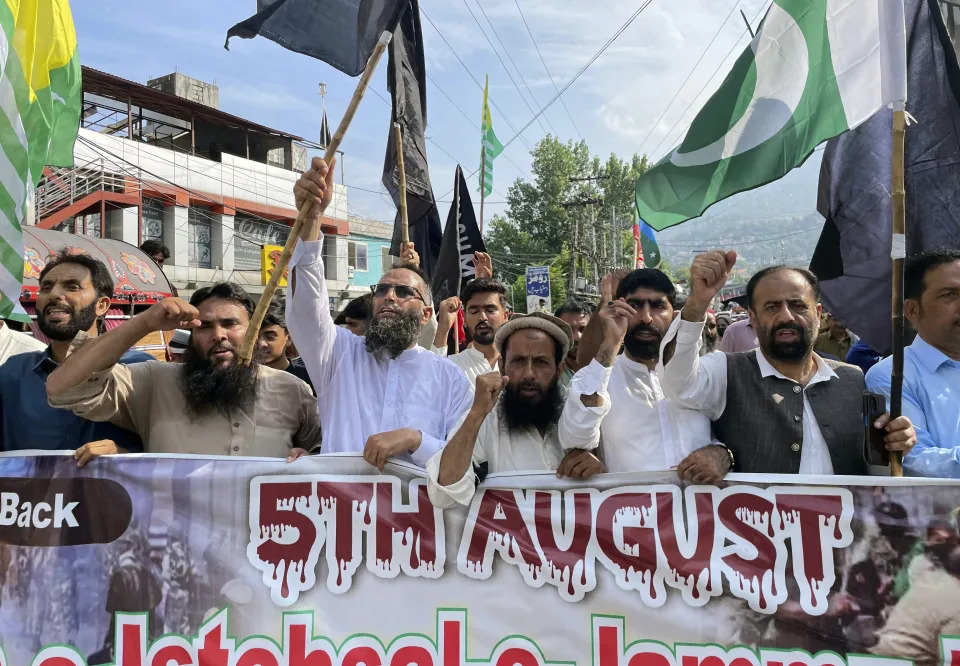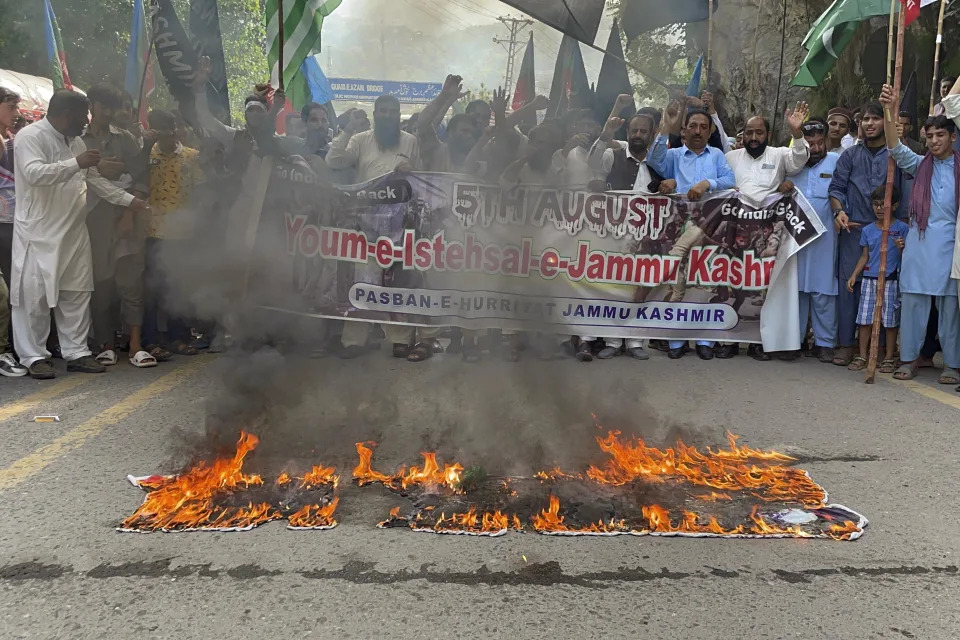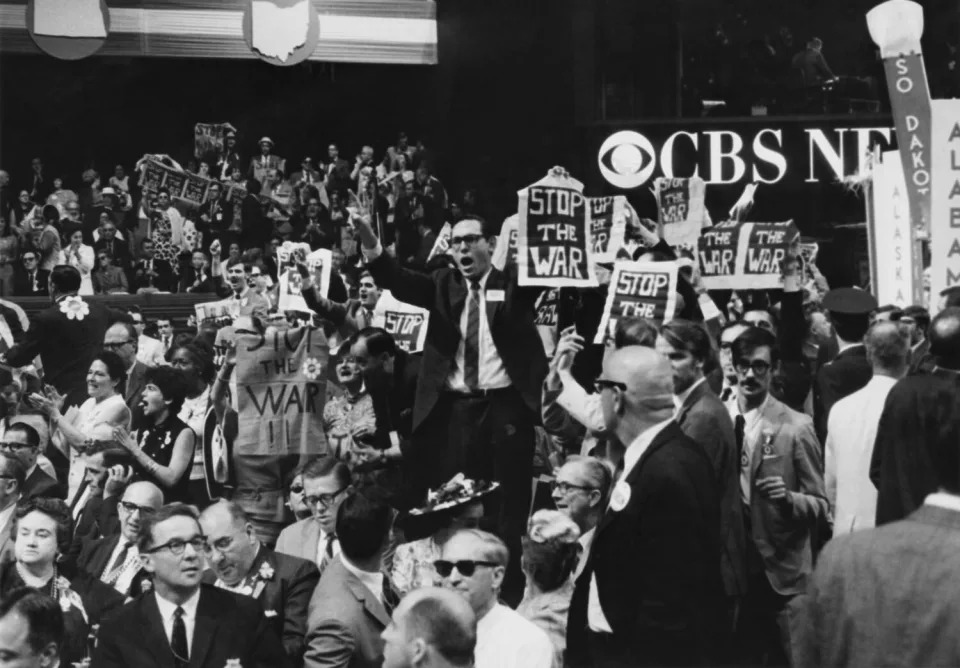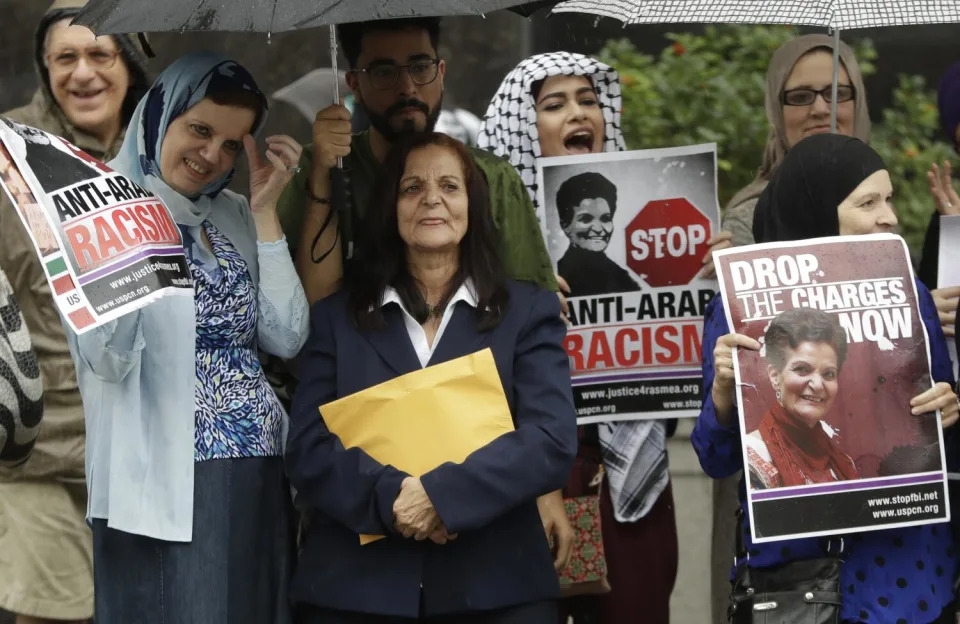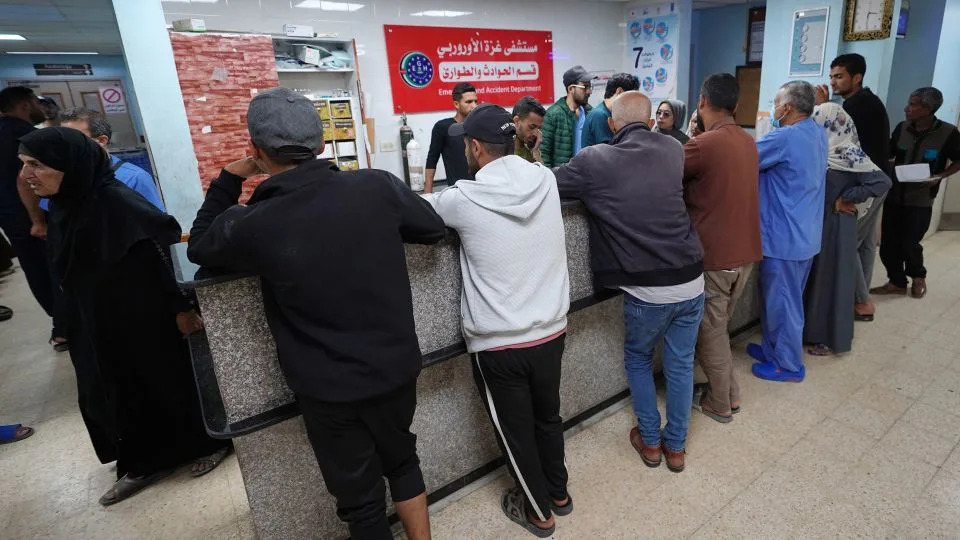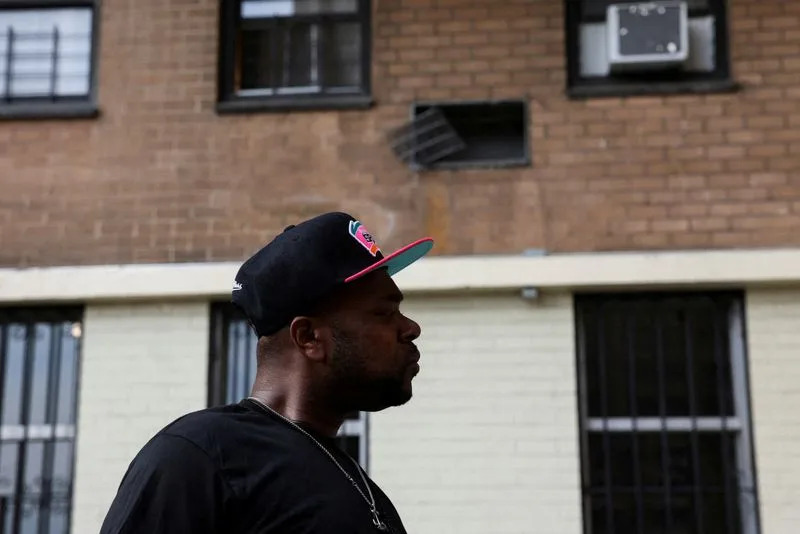Reuters
Mon, August 5, 2024
(Reuters) - Myanmar's junta has lost communications with senior officers at a major military base near the Chinese border, in a rare admission of battlefield failure after rebels announced they had taken control of the key regional army headquarters.
The Myanmar National Democratic Alliance Army (MNDAA) rebel group, which said on July 25 it had taken over the base but kept fighting to gain full control, posted photographs of its troops at the military stronghold in Lashio town on Saturday.
Junta troops have been unable to contact an undisclosed number of officers at the besieged northeastern regional command, said military spokesman Zaw Min Tun on Monday, following weeks of intense fighting in and around the town.
"It has been found that senior officials were arrested," he said in an audio message posted on the Telegram messaging app, adding the junta was working to verify the situation.
Myanmar's ruling generals are under unprecedented pressure, three years after unseating a civilian government in a dawn coup, with an armed rebellion against military rule gaining ground amid a stalling economy.
A resistance movement was sparked by a violent crackdown on demonstrations following the February 2021 coup, as thousands of young protesters took up arms and combined forces with several established ethnic rebel groups to fight the military.
"MNDAA has gained complete victory after destroying remaining enemy troops and fully conquered the northeastern military headquarters," the group said in a statement on social media, accompanied by photographs of its troops.
The loss of Lashio - the first of 14 regional military commands to fall to rebels - marks a major defeat for the junta, which last year suffered a succession of stinging losses in northern Shan state near the Chinese border.
That rebel offensive, dubbed Operation 1027, came to a halt after Beijing intervened to help forge a fragile ceasefire, but that collapsed when fighting resumed in June in northern Shan state, where Lashio in located. China has urged dialogue and an end to hostilities.
"The rapid fall of the Myanmar army's Northeastern Command makes it fully clear to the ranks of the resistance and to neighboring countries just how weak the Myanmar military has become," said Jason Tower at United States Institute of Peace.
"For Min Aung Hlaing, the implications are existential," he said, referring to the embattled junta chief. "The fall of Lashio could prove to be the beginning of the end."
Three other anti-junta ethnic armies, which are fighting the Myanmar military along the Thai and Indian borders, on Sunday congratulated the MNDAA and another allied group for the successful offensive in Lashio.
"We will also continue to fight as allies until the military falls," said the statement from the Kachin, Karen and Chin groups.
(Reporting by Reuters Staff; Editing by Devjyot Ghoshal, Martin Petty)
DAVID RISING
Mon, August 5, 2024
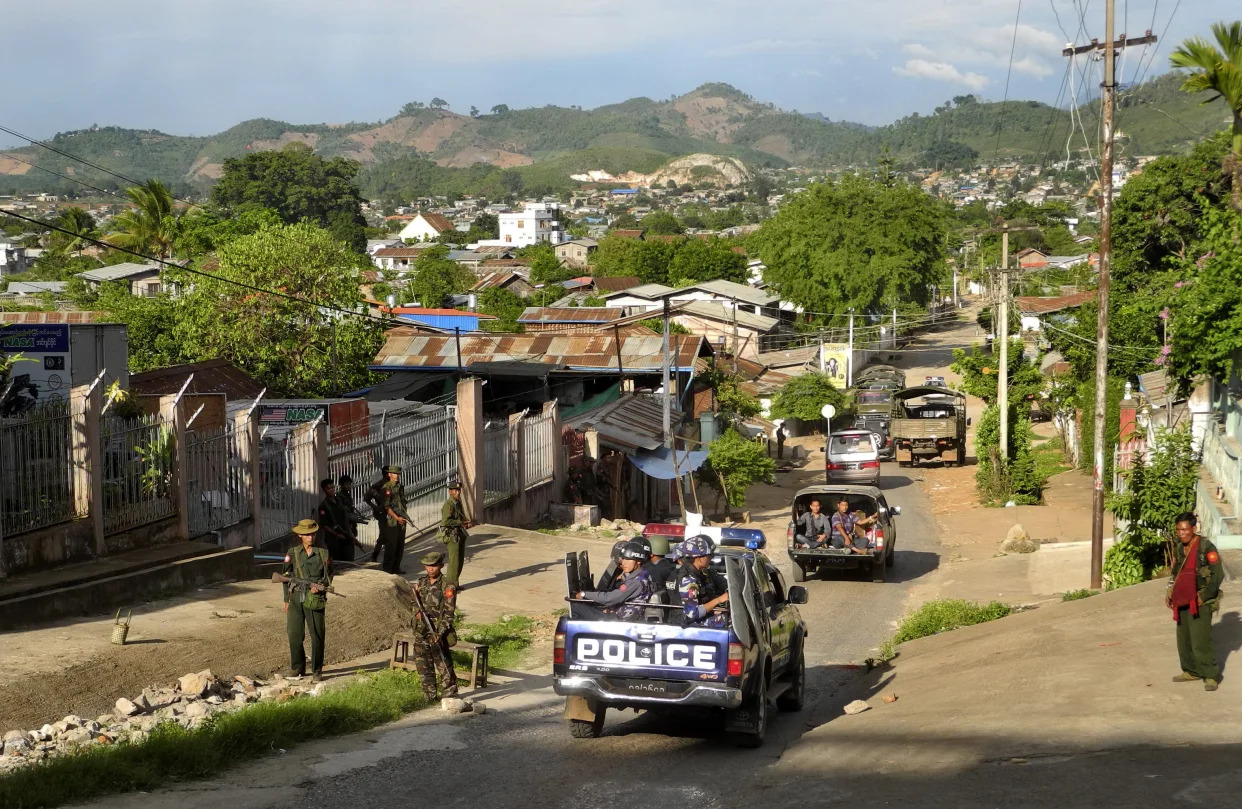
FILE - Army officers stand guard as police officers patrol in Lashio, northern Shan State, Myanmar, on May 29, 2013. (AP Photo/Ain Khaing Myae, File)
BANGKOK (AP) — Myanmar's military regime acknowledged Monday it had lost communications with the commanders of a strategically important army headquarters in the northeast, adding credence to claims from a militia group it had captured the base.
The fall of the army's Northeast Command in the city of Lashio would be the biggest in a series of setbacks and a significant blow to Myanmar’s military government this year as an offensive launched by an alliance of powerful militias of ethnic minority groups continues to make broad gains in the country's civil war.
“The regime’s loss of the Northeast Command is the most humiliating defeat of the war,” said Morgan Michaels, a Singapore-based analyst with the International Institute of Strategic Studies who runs its Myanmar Conflict Map project.
“Without Lashio, it will be extremely difficult for the regime to hold onto its final outposts in the theatre.”
Those include the key border crossing with China of Muse, as well as the strategic crossroads at Kyaukme, and it opens the way for attacks on Pyin Oo Lwin and Mandalay City, he said.
The loss also raises questions about whether the ruling military council could be forced to give up attempts to hold contested territory in order to consolidate a defense of the central heartland. It could also contribute to growing discontent with Senior Gen. Min Aung Hlaing, the officer who seized power after leading the overthrow of the elected government of Aung San Suu Kyi in 2021.
“The battle further underlines the utter failure of the army's senior leadership, especially Senior Gen. Min Aung Hlaing,” Michaels said.
“It seems increasingly unlikely that the army could survive with Min Aung Hlaing at the helm.”
Lashio, about 110 kilometers (70 miles) south of the Chinese border, has been the target of an offensive by the MNDAA, the Myanmar National Democratic Alliance Army since early July.
The MNDAA is a military force of the Kokang minority, who are ethnic Chinese. It is part of the Three Brotherhood Alliance, which last October launched a surprise offensive that succeeded in seizing large tracts of territory along the northern border with China.
China helped broker a cease-fire in January, but that fell apart in June when the Ta’ang National Liberation Army, another member of the Three Brotherhood Alliance made up of Ta'ang ethnic minority members, launched new attacks, followed by the MNDAA. The alliance’s third member, the Arakan Army, had never stopped fighting in its home Rakhine State in western Myanmar.
The groups in the alliance have been fighting for decades for greater autonomy from Myanmar’s central government. They are loosely allied with People’s Defense Forces — pro-democracy resistance groups that have arisen to fight military rule since the army took power.
The MNDAA had initially claimed the capture of the Northeast Command and Lashio on July 25, but it turned out the announcement was premature as the army continued to fight.
The MNDAA said in a statement published on its Facebook page Saturday that the group had finally completely captured the military’s Northeast Command headquarters and defeated the remaining army units in Lashio at 12:20 p.m. that day.
The claims could not be verified independently, with access to the internet and mobile phone services in the Lashio area mostly cut off.
A member of Lashio’s Freedom Youth Volunteers-FYV, reached while he was outside the city, told The Associated Press Monday that other members of his aid group had reported army personnel remained in control of some areas of the Northeast Command headquarters, though most had been taken by the MNDAA.
He spoke on the condition of anonymity out of fear of reprisals from both sides.
There were still reports of gunfire in the city on Sunday, but photos of captured army commanders, as well as multiple videos and photos of captured equipment and soldiers were circulating widely on social media, suggesting the MNDAA had taken the base.
The MNDAA itself released a photo of its troops posing in front of a sign outside the Northeast Command.
“The regime has clearly suffered an enormous loss and no longer has any meaningful control of the city, even if it retains a toehold for now,” Michaels said.
The MNDAA had captured a regional military headquarters in Laukkaing, a key city on the Chinese border, earlier in the offensive, but the Lashio headquarters is more important.
Early Monday, Maj. Gen. Zaw Min Tun, the spokesperson of Myanmar’s ruling military council, said in an audio statement on state-run MRTV television that it had lost contact with commanders of the Northeastern Command headquarters Saturday night and had unconfirmed reports some of them have been arrested by the MNDAA.
“We recognize and respect all the officers, soldiers, and policewomen of the Northeast Regional Military Command for protecting the command, Lashio territory, the military and the motherland with all their abilities," he said without specifically addressing MNDAA's claim to have captured the facility.
“I would like to say that the government and the military will continue to do what should be done for the country and the people.”





